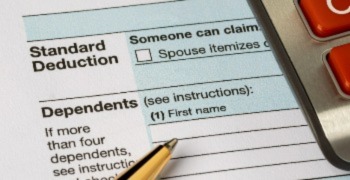
How inflation impacts business personal property tax valuations
Ah, inflation. The 40-something-year high we hit last year has certainly garnered its share (and more) of headlines. But while inflation effects are obvious to anyone buying groceries, pumping gas, or taking out a mortgage, other effects are more subtle and varied. For instance, let’s consider the role inflation plays in personal property tax valuation.
The accuracy of your property assessment can have a sizable impact on your business and the tax bill you owe. So, let’s answer four important questions:
How does inflation impact a property tax valuation?
There are two key values assessors factor into a personal property evaluation:
1. Cost
Assessors consider the original purchase price, as well as the current market value of the item if it were purchased new. And it may not just be the price tag of say, a new commercial freezer or a piece of heavy machinery.
For example, a business in California would have to factor in sales tax, freight, and installation charges as part of the costs of any assets it purchased.
2. Depreciation
Depreciation rates vary based on the type of asset. For example, going back to that piece of heavy equipment, it depreciates at a significantly different rate than a laptop.
Inflation impacts the cost portion of the assessment. The total effect of inflation on tax rates varies by jurisdiction and industry, but generally speaking, as market value rises, the taxable value of personal property rises with it.
During times when the economy is stable, inflation is almost negligible because the rate tends to be flat. For several decades, inflation was fairly steady, rising about 1–3% per year and remaining consistent across asset categories.
When the figures are rising at low, steady rates, cost and depreciation stay steady as well. Generally speaking, there’s also relative stasis with interest rates, revenue, and other investments. It’s kind of like a table when all the legs are the right length. The table may be a bit too tall or too short for your liking, but the surface is balanced.
However, recent figures have skyrocketed. When inflation rates jump from 1–3% to 7–10%, businesses can experience serious financial challenges at tax time. It’s like one of the table legs suddenly getting longer or shorter, throwing the whole thing off-kilter.
What effect does inflation have on business personal property tax?
When it comes to personal property tax valuation, the variable rate of inflation adds even more complexity. There have always been inflation variances for different areas of the economy, but the variances have become more pronounced.
The effect on a business’s personal property tax valuation depends largely on the assets. For example, because the price of petroleum is rising more than the cost of labor, the inflation rate applied to freight costs would likely be higher than the rate applied to installation charges.
The same goes for different types of assets. Machines, telecommunications equipment, commercial vehicles, office furniture, building HVAC systems — there are now more discernible valuation differences between these types of assets because of volatile inflation.
Unfortunately, local assessors typically use a single inflation rate for all asset categories, meaning the inflation rate will either be too high or too low for many assets. For instance, it may be reasonable to apply a 7% inflation rate to petroleum, but that same rate would be inappropriately high for labor.
Depending on what your business purchased and the inflation rate used, you could end up with a sizable disconnect between assessed values and actual values, leading to higher tax rates that may not be justified.
Can a business personal property tax appeal help?
Luckily, your relationship with your assessor isn’t necessarily one way. After you receive your valuation, you can ask what trend factors and inflation rates they used to value your personal property. If the numbers don’t seem accurate, you have the right to appeal.
Start by asking your assessor to take a closer look at specific assets to see what inflation rates are most appropriate. Even lowering the rate by 3–4% can generate significant savings depending on the assets they reevaluate.
Build a compelling narrative about different asset costs and include receipts that support it. For example, say you’re paying property taxes on the installation of equipment, with costs for both materials and labor.
If the majority of those costs are labor-related and the assessor is using a general inflation figure of 7% for the entire asset category, your appeal should include evidence that labor costs are less impacted by inflation. Depending on your findings and the strength of your analysis, it’s entirely possible the assessment board may agree with you and reduce the valuation accordingly.
How do you know if an appeal is worth the cost?
Determining whether you should appeal your business personal property tax valuation can be complicated. For starters, you’ll need to know how much your valuation should be to compare it with your assessed value.
Because so many factors contribute to the final assessment number, determining property valuation on your own can be a daunting task.
However, Avalara Property Tax can help you dig deeper with less effort. It automatically depreciates assets over time, provides insight into tax rate trends, and helps you identify assessment reduction opportunities.
Avalara Property Tax can also perform “what if” analysis by using different depreciation scales and life spans for your assets. And when an assessment isn’t clear, you can use the software to more easily deconstruct the assessor’s valuation methods.
If you think Avalara may be right for your business, contact us to schedule a demo.

Avalara Tax Changes 2026 is here
The 10th edition of our annual report engagingly breaks down key policies related to sales tax, tariffs, and VAT.
Stay up to date
Sign up for our free newsletter and stay up to date with the latest tax news.















